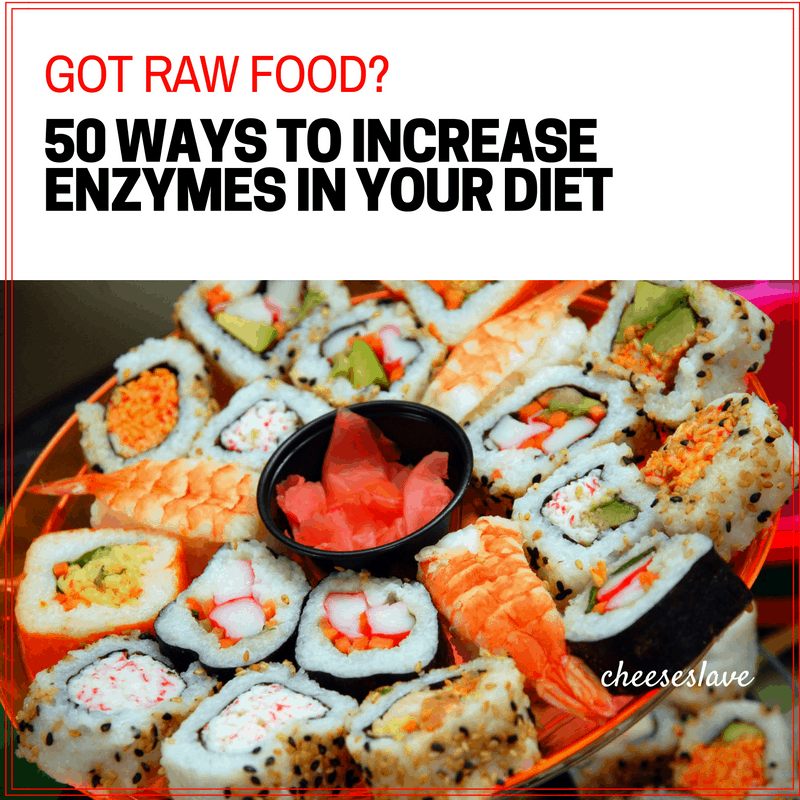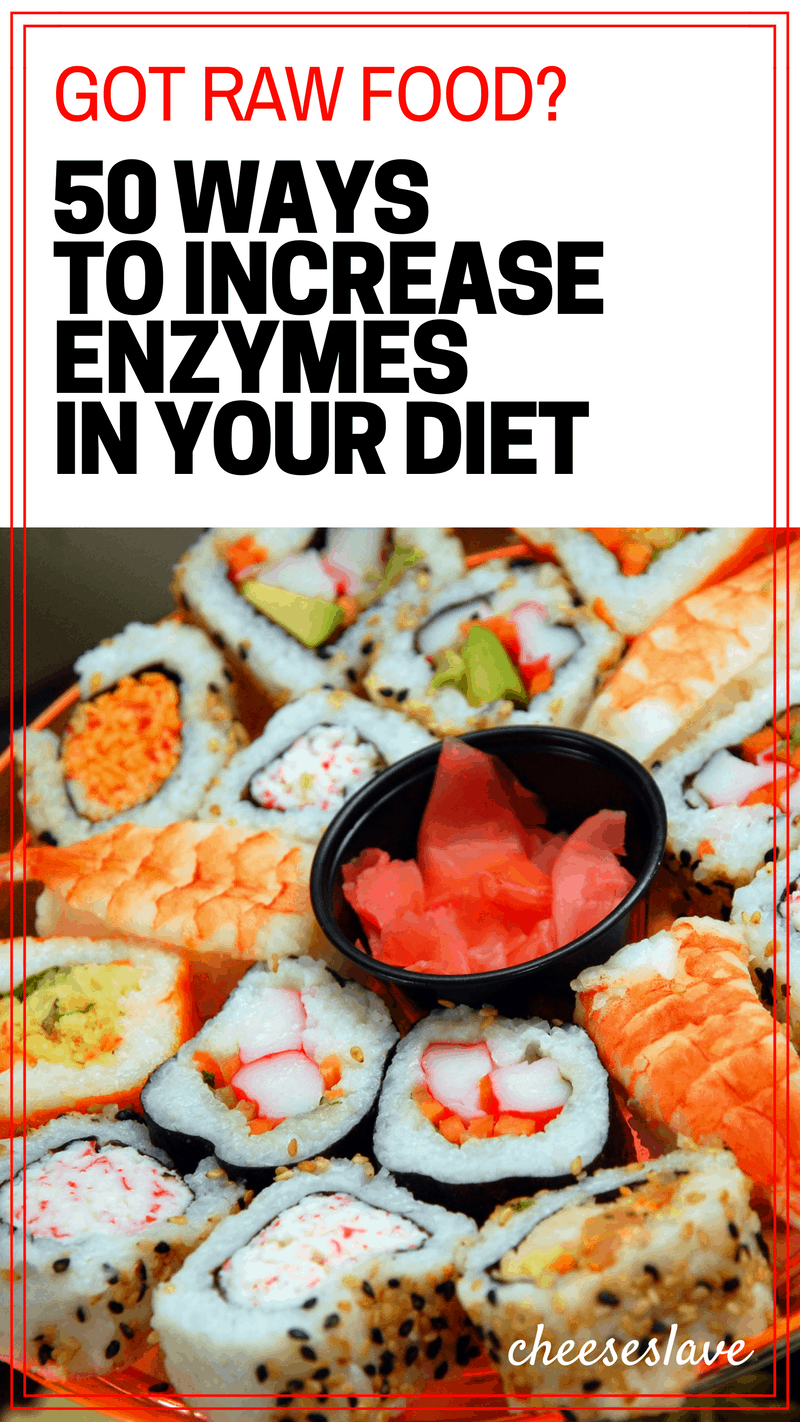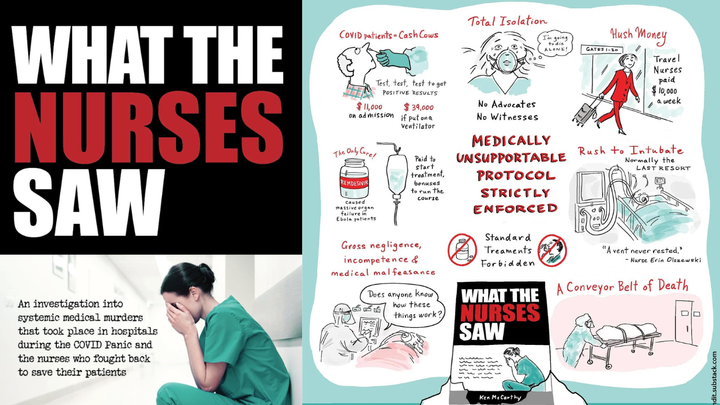Got Raw Food? 50 Ways to Increase Enzymes In Your Diet
Want to increase enzymes in your diet? In this post, I go over why you should eat more raw food and how enzymes improve your health.

Want to increase enzymes in your diet? In this post, I go over why you should eat more raw food and how enzymes improve your health.
I have a t-shirt that says, “The revolution will not be pasteurized”. On the back it says “Drink raw milk.”
I wear it proudly because I believe so strongly in the health benefits of drinking raw, unpasteurized milk.

Pasteurization: Killing Bugs in Pathogenic Milk
When I learned about the history of milk, I was surprised to find out that pasteurization began as a way to kill pathogens (bad bacteria) in milk from unhealthy cows in some of America’s first factory farms.
These were cows being fed a grain mash leftover from whiskey distilleries in the late 1800s. The milk was so tainted, it was blue. They had to add chalk to make it white.
No wonder the infant mortality rate shot up to 50% in cities where the poor were feeding this milk to their infants. (Source: The Untold Story Of Milk by Dr. Ron Schmid)
Healthy cows on grass don’t produce milk that is rife with pathogens. So you don’t actually need to pasteurize it. But you do need to pasteurize milk that is pathogenic.
Pasteurization makes the milk seem healthy — but it isn’t. It’s just full of dead pathogenic bugs.
Of course, it’s more convenient for industrial food processors to feed cows cheap corn and soybeans — and just pasteurize the milk. But it’s not healthy for them — or us. Did you know a cow being fed grain lives only an average of 3.5 years, compared to a cow on pasture, who lives almost 3 times that long? (Source: Realmilk.com)
For more on raw milk, read my Top 10 Reasons To Drink Raw Milk.
First Pasteurization, Now Ammonia
Milk isn’t the only thing being pasteurized these days. I ordered a can of tomato juice on an airplane recently and was dismayed to see the word PASTEURIZED on the label.
That’s nothing compared to this bit of shocking news… I just saw the new movie, Food Inc. last week. They interviewed a beef processor who, in an attempt to kill the e Coli bacteria, washes the beef with a mixture of ammonia and chlorine.
They said this ammonia-processed beef is in 70% of American restaurants.
Bon appetit, eh?
Why Eat Raw Food?
Raw food is living food, and it’s teeming with good bacteria and rich in enzymes. We need probiotics and enzymes in our diet for good health.
What Are Enzymes?
According to Sally Fallon-Morell and Mary Enig, PhD, on the Weston A. Price Foundation website, “enzymes are complex proteins that act as catalysts in almost every biochemical process that takes place in the body”.
They write:
Enzyme research has revealed the importance of raw foods in the diet. The enzymes in raw food help start the process of digestion and reduce the body’s need to produce digestive enzymes. All enzymes are deactivated at a wet-heat temperature of 118 degrees Fahrenheit and a dry-heat temperature of about 150 degrees. It is one of those happy designs of nature that foods and liquids at 117 degrees can be touched without pain, but liquids over 118 degrees will burn. Thus, we have a built-in mechanism for determining whether or not the food we are eating still contains its enzyme content.
A diet composed exclusively of cooked food puts a severe strain on the pancreas, drawing down its reserves, so to speak. If the pancreas is constantly overstimulated to produce enzymes that ought to be in foods, the result over time will be inhibited function. Humans eating an enzyme-poor diet, comprised primarily of cooked food, use up a tremendous amount of their enzyme potential in the outpouring of secretions from the pancreas and other digestive organs. The result, according to the late Dr. Edward Howell, a noted pioneer in the field of enzyme research, is a shortened life span, illness and lowered resistance to stress of all types. He points out that humans and animals on a diet comprised largely of cooked food have enlarged pancreas organs while other glands and organs, notably the brain, actually shrink in size.
Whoa — shrunken brains.
That’s reason enough to eat more raw foods. 😉
Do You Have To Eat a 100% Raw Diet To Be Healthy?
No. It is not necessary to eat all of our foods raw. In fact, some foods need to be cooked in order to minimize anti-nutrients (leafy green vegetables like kale and spinach, for example).
The Weston A. Price Foundation recommends that we incorporate raw foods into our meals, but they do not suggest we eat a totally raw diet. On their website, they elaborate on the role of enzymes in traditional diets:
Almost all traditional societies incorporate raw, enzyme-rich foods into their cuisines — not only vegetable foods but also raw animal proteins and fats in the form of raw dairy foods, raw fish and raw muscle and organ meats. These diets also traditionally include a certain amount of cultured or fermented foods, which have an enzyme content that is actually enhanced by the fermenting and culturing process.
In other words, sure, you could eat a whole lot of salad, but not everyone lives in places where they can get fresh fruits and vegetables year-round. There are so many other ways to get enzymes. I thought I’d write up a list to remind us of just some of the many ways to enjoy raw foods and increase enzymes in your diet.
50 Ways to Increase Enzymes In Your Diet
1. Fresh watermelon
2. Raw milk
3. Naturally fermented sauerkraut
4. Dried fruit (raisins, cherries, blueberries, bananas, dried at a low temperature)
5. Sushi
6. Oysters on the half shell (see my recipe)
7. Essene bread (a sprouted grain bread baked at a low temperature)
8. Raw honey mixed into yogurt
9. Beef tartare
10. Naturally fermented salsa (see my recipe)
11. Kefir (see my recipe)
12. Naturally fermented dill pickles or pickle relish
13. Caesar salad
14. Fresh coconut water
15. Raw butter on toast
16. Ceviche
17. Beet kvass
18. An apple (I guess this is why they say, “An apple a day keeps the doctor away”)
19. Sour cream
20. Kombucha Read about why I no longer recommend kombucha due to the high levels of fluoride
21. Raw bean and seed sprouts, added to salads or eaten as a snack
22. Sprouted flour crackers (dried, not baked — see my recipe)
23. Kefir soda pop (see my recipe)
24. Soaked granola (dried, not baked — see my recipe)
25. Tuna tartare
26. Raw ice cream (made with raw cream and raw egg yolks)
27. Gazpacho
28. Fruit salad
29. Caviar
30. Raw almonds, soaked and dried (make sure they are real raw almonds, as many almonds are labeled raw but they are not)
31. Hamburgers, cooked medium rare
32. Hollandaise sauce made with raw egg yolks
33. Fresh tomato juice (made at home — most store-bought brands are pasteurized)
34. Banana split
35. Buttermilk ranch dressing (see my recipe)
36. Fresh carrot juice (made at home — most store-bought brands are pasteurized)
37. Raw egg yolks added to smoothies or milk shakes
38. Caprese salad
39. Pesto made with fresh basil, raw Parmesan, and raw pine nuts (soaked and dried)
40. Nicoise salad
41. Salmon roe (see my recipe for Deviled Eggs with Salmon Roe)
42. Mayonnaise made with raw egg yolks (see my recipe)
43. Fruit leather (dried at a low temperature)
44. Cantaloupe
45. Fresh guacamole
46. Steak, cooked medium rare
47. Tzatziki sauce (Greek yogurt cucumber dip)
48. Fresh wheatgrass juice
49. Sprouted seeds, nuts and beans added to a salad
50. Kefir smoothies
How to Increase Enzymes: How We Eat
We don’t eat salads every day. Maybe a few times a week. But we’re lucky to live in California where we can get fresh local produce year-round, so it’s not hard to incorporate salads whenever we feel like it. I can grow lettuce in my backyard all year long.
Our family also consumes a lot of raw dairy, mainly in the form of milk and kefir. My husband doesn’t enjoy raw milk like I do, but he does like raw fish and raw meats. I try to make sure he gets sushi or raw oysters at least once a week. And I’ve been making soaked granola and sprouted flour crackers in my dehydrator. I also try to get him to drink kombucha and kefir soda pop, and we keep a lot of fresh fruits in the house.
Tips and Resources
Use a Dehydrator
I love-love-love my Excalibur dehydrator. This is my favorite appliance for making enzyme-rich foods. I use it for making crackers, granola, and drying fruits and soaked oatmeal and nuts and seeds at a low temperature — to keep the enzymes intact. See my resources page for where to buy.
Make or Buy Lacto-Fermented Foods
I also try to serve lacto-fermented foods with meals as often as possible. Some examples:
- Serve lacto-fermented salsa and sour cream with tacos or nachos
- Add raw fermented dressing to a salad
- Make homemade mayonnaise with whey
- Serve sauerkraut with soups, beans or hot dogs
- Serve kefir soda pop with the meal
How Do You Increase Enzymes in Your Diet?
What are some of your favorite ways to increase enzymes in your diet and your family’s diet? Please share in the comments below.
Pin This Post




Comments ()